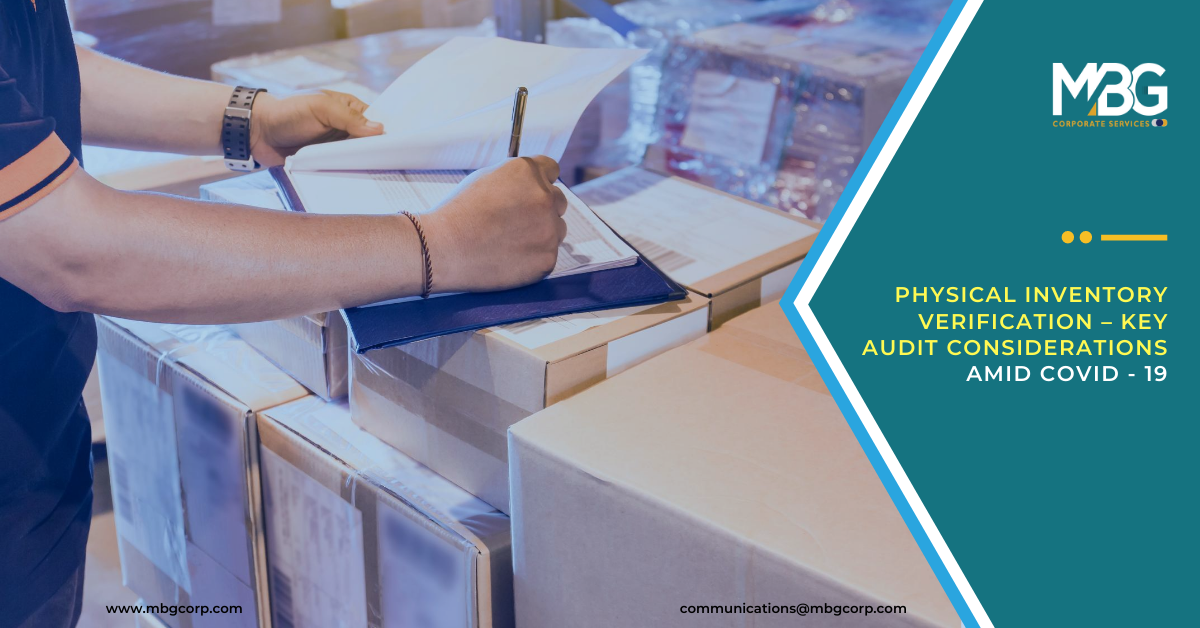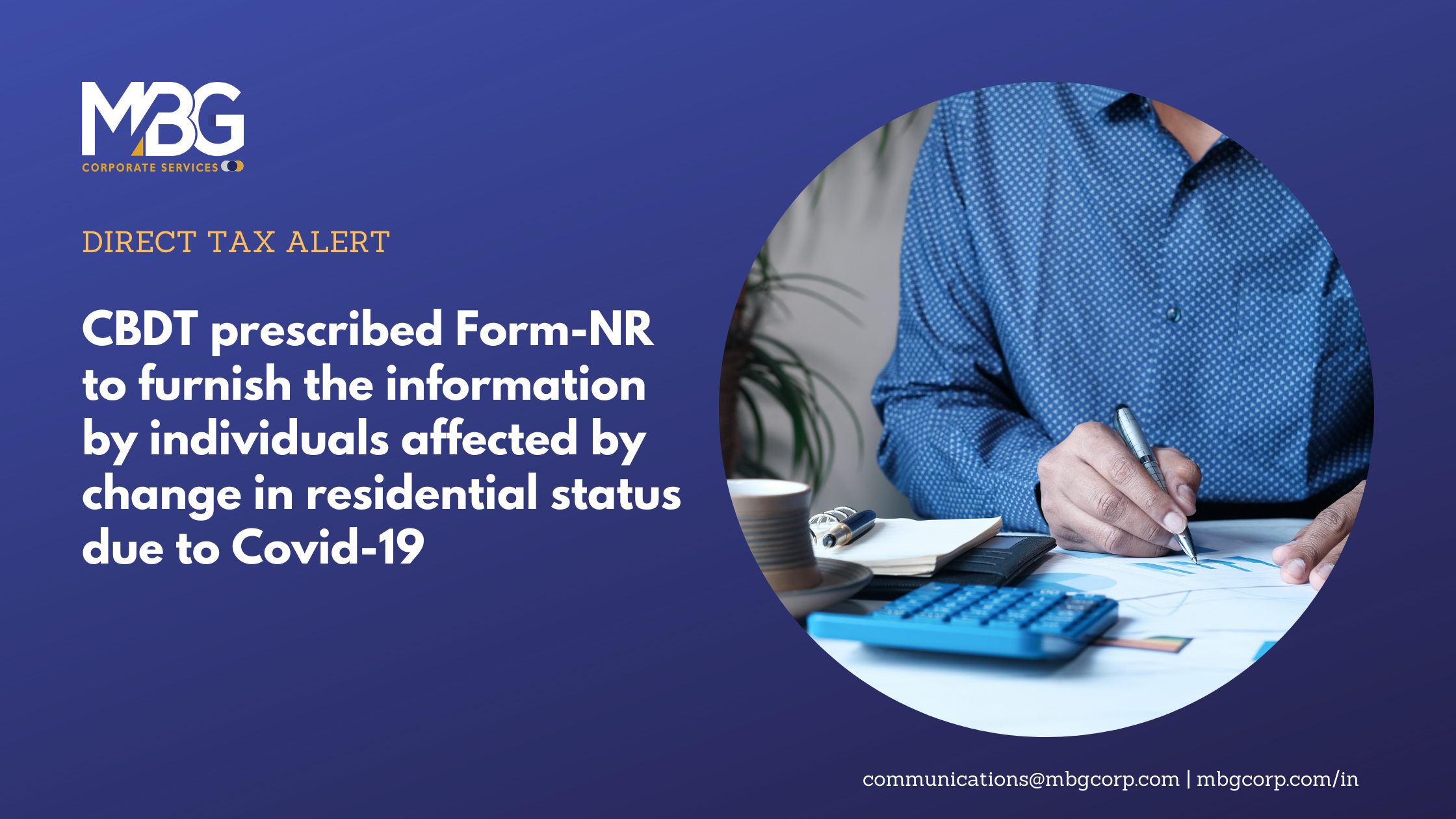Physical Inventory Verification – Key Audit Considerations amid COVID – 19
August 25, 2020

ICAI had issued an Auditing Guidance on Key Audit Consideration for Physical Verification of Inventory amid COVID - 19. Summary of Auditing Guidance is as follows:
(A) Background
-
- The Companies (Auditor's Report) Order, 2016 (CARO 2016) also requires auditors to comment on "Whether physical verification of inventory has been conducted at reasonable intervals by the management and whether any material discrepancies were noticed and if so, whether they have been properly dealt with in the books of account".
- Standard of Auditing (SA) 500, "Audit Evidence" prescribes that the objective of the auditor is to design and perform audit procedures in such a way as to enable the auditor to obtain sufficient appropriate audit evidence to be able to draw reasonable conclusions on which to base the auditor's opinion. When inventory is material to the financial statements, SA 501, "Audit Evidence - Specific Considerations for Selected Items" requires that the auditor shall obtain sufficient appropriate audit evidence regarding the existence and condition of inventory by:
1. Attendance at physical inventory counting, unless impracticable to:
i. Evaluate management's instructions and procedures for recording and controlling the results of the entity's physical inventory counting; ii. Observe the performance of management's count procedures; iii. Inspect the inventory; and iv. Perform test counts;
2. Performing audit procedures over the entity's final inventory records to determine whether they accurately reflect actual inventory count results. The term "impracticable" has been explained in paragraph A12 of SA 501 as below:
"A12 In some cases, attendance at physical inventory counting may be impracticable. This may be due to factors such as the nature and location of the inventory, for example, where inventory is held in a location that may pose threats to the safety of the auditor. The matter of general inconvenience to the auditor, however, is not sufficient to support a decision by the auditor that attendance is impracticable. Further, as explained in SA 200, the matter of difficulty, time, or cost involved is not in itself a valid basis for the auditor to omit an audit procedure for which there is no alternative or to be satisfied with audit evidence that is less than persuasive."
(B) Audit Consideration in Various Circumstances
The COVID-19 outbreak could create several implicit questions for the management of an entity to conduct physical inventory counting and for the auditors to attend these counts. With scenarios like lockdown, travel restrictions, etc. as imposed by the Government of India, physical inventory counting would be challenging and in some cases, it would be impracticable. Possible challenges in this regard are discussed below:
-
- Management Unable to conduct physical count as on the date of Financial Statement: There could be situations where management is unable to conduct physical inventory counting (due to government lockdown) as on the date of financial statements. In such a situation, management should inform the auditors and those charged with governance the reasons for not conducting the inventory counting.
- Physical inventory counting conducted by management at a date other than the date of Financial Statements:
- The auditor would need to comply with the procedures given in paragraphs 5 and 6 of SA 501 read with paragraphs A9 to A11 of SA 501.
- It involves attending inventory counting at a later date from the date of the financial statements with performing roll-back procedures to the balance sheet date, or, if an inventory counting was conducted by the entity and attended by the auditor at an interim date before the date of the financial statements, it may be possible to use those findings and perform roll-forward procedures to the balance sheet date.
- Auditors should exercise professional skepticism and consider whether inventory records and internal controls have deteriorated as a result of current events, including assessing any additional actions taken by the entity regarding its security. Accordingly, auditors should appropriately consider the impact of the aforesaid on their opinion on internal financial controls under section 143(3) (i) of the Companies Act, 2013.
- Reference may also be made to paragraphs 2.47 to 2.62 of the "Implementation Guide to SA 501" issued by the Auditing and Assurance Standards Board of ICAI.
-
- Alternative audit procedures where it is impracticable for auditors to attend inventory physical counting:
- Due to several restrictions imposed due to COVID-19 pandemic, in certain cases it could be impracticable for auditors to physically attend the inventory counting, in such cases, the auditor would need to comply with the procedures given in paragraph 7 of SA 501 read with paragraphs A12 to A14 of SA 501.
- Reference may also be made to paragraph 2.61 of the Implementation Guide to SA 501.
- The use of alternative audit procedures may include the followings:
I. Using the work of internal Auditor
II. Engaging other Chartered Accountant(s) to attend physical verification
III. Use of Technology in inventory counting ( i.e. video call )
-
- Inventory held by a third party: In this regard, the auditor should read and understand the contract with the third party to determine if the contract specifies the responsibility of the third party to track and record the inventory of the entity separately and any consequential impact on the ability of the auditor to rely on such confirmation from the third party.
- Inventory in transit/cut-off procedures: Due to the lockdown situation, it might be possible that inventory purchased or sold might be locked up in transit. Auditors should obtain suitable audit evidence regarding the location and condition of the inventory including documentary records about purchases/sales. Appropriate cut-off procedures need to be employed to ensure appropriate quantities are considered in the inventory.
(C) Implications for the Auditor's Report
-
- The auditor is not absolved from the primary responsibility in respect of attendance at physical inventory counting and thus cannot include a division of responsibility in the auditor's report in respect of alternative audit procedures carried out.
- Where such alternative audit procedures provide sufficient appropriate audit evidence to conclude that inventory is free from material misstatement, the auditor's opinion need not be modified in respect of inventory.
- However, if it is not possible to perform alternative audit procedures to obtain sufficient appropriate audit evidence in relation to material inventory balances, the auditor should modify the opinion in the auditor's report in accordance with SA 705(Revised).
The complete text of the Guidance Note may be viewed at below link:
Website Link: https://resource.cdn.icai.org/59498aasb48418.pdf
This article is contributed by:
Prashan Begwani Associate Director, Audit and Assurance







